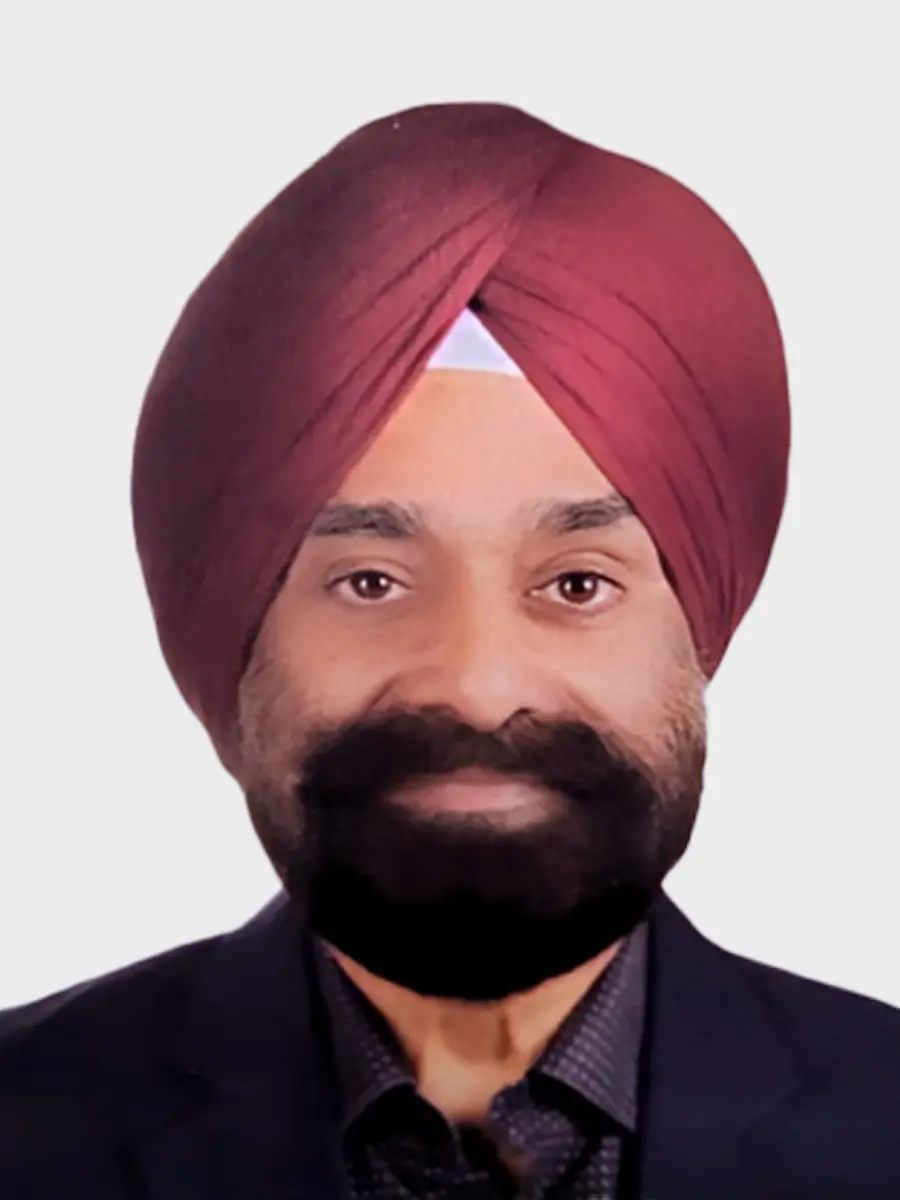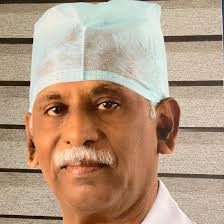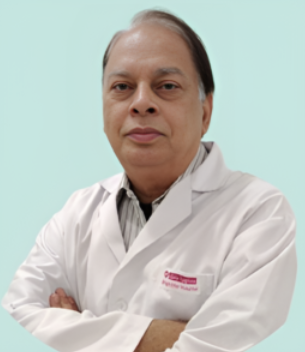Cardiac Resynchronization Therapy (CRT) for Heart Failure
Dr. Aman Priya Khanna

Treatment Duration
3 Hours
------ To ------5 Hours
Treatment Cost
₹ 4,00,000
------ To ------₹ 8,50,000

Cardiac Resynchronisation Therapy (CRT) is a procedure to implant a biventricular pacemaker, also known as a cardiac resynchronisation device, to send electric signals to the heart’s lower chambers (left and right ventricles). The signal makes the ventricles squeeze or contract in a more coordinated way, making them pump blood together and restoring the normal pattern of the heartbeat. Sometimes, the pacemaker also contains an implantable cardioverter-defibrillator (ICD) to deliver an electric shock and reset the heartbeat in case of severe arrhythmia (irregular heartbeat).
| Procedure Name | Cardiac Resynchronisation Therapy |
| Alternative Name | Biventricular Pacing |
| Conditions Treated | Heart Failure |
| Benefits of the Surgery |
Lowers all-cause mortality, Reduces complications of heart failure, Improves exercise capacity and quality of life, Decreases hospitalisations. |
| Treated By | Cardiologist |
You can check Cardiac Resynchronisation Therapy Cost here.
Anatomy and Physiology of Heart
- The atria and the ventricles alternatively contract and relax to pump blood through the heart.
- The heart’s electrical system makes it possible for the atria and ventricles to work together.
- Normally, the electrical signal begins at the sinoatrial nodes in the right atrium. The electrical activity spreads through the atria’s walls, resulting in their contraction.
- The electrical signal passes through the AV node between the atria and ventricles, which slows the electrical signal before it enters the ventricles. This delay allows the atria to contract before the ventricles.
- Next, the electrical signal passes through a pathway of specialised electricity-conducting fibres known as the His-Purkinje network and into the muscular walls of the ventricle, causing them to contract.
- The complete sequence occurs with every heartbeat (around 60-100 times per minute).
- During heart failure, the blood moves through the heart at a slower rate, resulting in a delay between the contraction of the left and right ventricles.
Expert Doctors (10)
NABH Accredited Hospitals (10)


Conditions treated with Cardiac Resynchronization Therapy
Your doctor may recommend a cardiac resynchronisation therapy if:
- You have moderate to severe symptoms of heart failure, some of which include:
- Shortness of breath
- Fatigue and weakness
- Irregular heartbeat
- Swelling in legs, feet, and ankles
- Swelling in the belly area
- Rapid weight gain
- The lower chambers (ventricles) of your heart are not working together
- Your heart becomes weak and enlarged
- Other treatments like medications and lifestyle changes are not effective in controlling heart failure
- You have a history of cardiac arrest or are at risk of cardiac arrest
- You have delayed activation of the heart, such as bundle branch block
How is CRT performed?
CRT is a minor surgical procedure to implant a device in your chest.
- You’ll likely be awake but sleepy during the procedure. Your provider will give you medications to help you relax.
- He/she will also numb the area where the device is to be placed (usually under your left collar bone or clavicle).
- Next, he/she will make a small cut or incision to create a pocket under the skin, which will hold the wires and battery pack of the CRT device.
- The surgeon inserts wires into a major vein near or under the collarbone and guides it to the heart using a fluoroscopy machine.
- He/she guides two wires to the right atrium and right ventricle and the third through the coronary sinus to the left ventricle.
- The wires are tested with an electric pulse, during which you may feel like your heart is racing.
- If the wires are working as they should, the other ends of these wires are attached to a pulse generator, and placed in a pocket created under the skin beneath the collarbone.
- The doctor will then close the incision with stitches or surgical staples and apply a bandage to the wound.
- The complete procedure may take about 3 to 5 hours.
The devices used for cardiac resynchronisation therapy include:
- Cardiac resynchronisation therapy with a pacemaker (CRT-P): This device has three leads or wires connecting the pacemaker to the right atria and right and left ventricles. It is usually used for elderly female patients with non-ischemic heart failure, renal dysfunction, or anaemia. The device delivers small impulses to the heart’s left and right ventricles, helping them contract simultaneously.
- Cardiac resynchronisation therapy with a pacemaker and an ICD (CRT-D): This device is used for patients with heart failure and risk of sudden cardiac death. An ICD can detect dangerous heart rhythms and deliver a stronger energy shock than a pacemaker can.
What to expect before and on the day of the surgery?
Before the Surgery
- You will have a consultation session with your doctor before the procedure.
- He/she will ask about your medical history and conduct diagnostic tests to examine your heart’s condition.
- Let your doctor know about your history of problems with anaesthesia.
- Tell him/her if you have had any recent symptoms of cold or infections.
- Inform the doctor if you take any prescription or over-the-counter medications.
- You may need to stop taking some specific medications, such as blood thinners, several days before the procedure.
- Your healthcare team will ask you to not eat or drink anything after midnight the night before the procedure.
- The doctor will briefly explain the procedure, risks and benefits of the surgery.
- He/she will also explain the hospital stay, estimated cost, and insurance formalities.
On the Day of the Surgery
- On the day of the surgery, the hospital staff will ask you to sign consent formalities.
- You will be informed to change into a hospital gown and remove the jewellery and non-permanent dentures.
- Someone from the team will shave the excess hair on your chest’s left or right side.
- Your doctor will record your last meal, monitor your vitals, and shift you to the OT room.
During the Surgery
- Once in the OT room, you will be made to relax on the operating table.
- The team will put an intravenous (IV) line for fluids and medications in your arms or hands to help you relax and make you feel drowsy.
- The nursing team will use a special soap to cleanse the surgical site.
- Throughout the procedure, the medical team will monitor your vitals, including blood pressure, breathing, and heart rate.
- Finally, the doctor will perform the surgical procedure.
What Can You Expect After the Surgery?
In the Hospital
- After the surgery, the staff will shift you to the recovery room until the effect of the relaxing medicine wears off.
- You will be given pain medications if needed.
- CRT is usually done as an outpatient procedure. However, sometimes, you may need to stay in the hospital for a day or two while your provider checks the settings on your CRT device.
- The doctor will provide home care and follow-up instructions before you leave the hospital.
At Home
- You can follow your normal diet.
- You need to limit engaging in strenuous activities and lifting heavy objects for the first six weeks after the procedure.
- Avoid activities like swimming, bowling, or tennis.
- You need to keep the dressing clean and dry until your provider tells you to remove the dressing and take a shower.
Living With CRT Device
You may need to follow some precautions after returning to your normal activities:
- Make sure to attend follow-up appointments.
- Take your medications as instructed by the doctor.
- Do not put cell phones in your pocket over the CRT.
- Do not use muscle stimulators and magnetic mattresses or pillows.
- Keep all the electrical devices about 6 inches away from your CRT device.
- Stay away from devices with a strong magnetic field, like microwaves and electrical generators.
- Carry a CRT pacemaker identification card at all times to let medical and security personnel know about the device during an emergency.
What is Electromagnetic Interference (EMI)?
- Any item that generates or uses electricity has invisible electromagnetic fields around them, which might affect the normal operation of CRT. This is called electromagnetic interference. Most household items are safe to use, such as curling irons, battery chargers, hot tubs, saunas, etc.
Preparing for Shock Therapy
While the sensations from shock therapy will last only for a moment, it is vital to understand what you can expect:
- Review your ‘shock plan’ with your healthcare team if you have a CRT device.
- Have someone stay with you, prepared to perform cardiopulmonary resuscitation (CPR) if needed.
- If you don’t feel well after a shock, have someone call the doctor.
- If no symptoms appear after a shock, you may not need to contact your doctor.
- You may experience the symptoms of arrhythmia but not receive shock therapy. This can be due to the programmed settings of your device. If your arrhythmia symptoms are severe or last for more than a minute, seek immediate medical attention.
First Follow-Up Appointment
- The first follow-up appointment is typically scheduled two to four weeks after the CRT procedure.
- During the visit, the doctor makes adjustments to the device to make it last longer.
- He/she may also perform an echocardiogram during the visit.
- You will have further follow-up appointments at least once every six months to check the functioning of your device.
- The doctor will also check if you have had any arrhythmia episodes since your last visit.
Benefits of CRT
CRT has several benefits, such as:
- Lowers all-cause mortality
- Reduces the symptoms and complications of heart failure
- Improves exercise capacity and quality of life
- Decreases hospitalisations
How Long Will a CRT Last?
Generally, the CRT battery lasts for five to eight years, but it may vary depending on how much the body needs CRT to pace your heart. The doctor will need to replace the CRT battery over time in a minor generator (battery) change procedure.
Risks and Complications of CRT
The complications of CRT include:
- Heart rhythm problems
- Pneumothorax (collapsed lung)
- Cardiac tamponade (pressure on the heart due to collection of blood in the sac surrounding the heart)
- Failure of the CRT device
- Movement of the device or its wires, which can require another procedure
When is consultation with the doctor needed?
- Call your healthcare provider if you experience the following:-
- Warmth, redness, or swelling around the device insertion site
- Increased bleeding or drainage from the incision site
- High fever that does not go away in two to three days
- Symptoms of abnormal heartbeat
- Hear a beeping sound from your device
Risks of Delayed CRT
The sequelae of not treating the complications of CRT in time include:
- Cardiac tamponade can be life-threatening
- The movement of the device or its wires can lead to cardiac perforation
Last Updated on: 6 December 2023
Reviewer

Dr. Aman Priya Khanna
MBBS, DNB General Surgery, Fellowship in Minimal Access Surgery, FIAGES
14 Years Experience
Dr Aman Priya Khanna is a well-known General Surgeon, Proctologist and Bariatric Surgeon currently associated with HealthFort Clinic, Health First Multispecialty Clinic in Delhi. He has 14 years of experience in General Surgery, Proctolo...View More
Author

She has extensive experience in content and regulatory writing with reputed organisations like Sun Pharmaceuticals and Innodata. Skilled in SEO and passionate about creating informative and engaging medical conten...View More






















